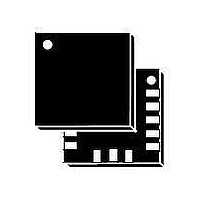LIS332AR STMicroelectronics, LIS332AR Datasheet - Page 8

LIS332AR
Manufacturer Part Number
LIS332AR
Description
Board Mount Accelerometers Digital 2.4v - 3.3v 100 Noise 0.3mA
Manufacturer
STMicroelectronics
Datasheet
1.LIS332AR.pdf
(14 pages)
Specifications of LIS332AR
Sensing Axis
X, Y, Z
Acceleration
2 g
Supply Voltage (max)
3.6 V
Supply Voltage (min)
2.16 V
Supply Current
0.3 mA
Maximum Operating Temperature
+ 85 C
Minimum Operating Temperature
- 40 C
Mounting Style
SMD/SMT
Shutdown
Yes
Sensitivity
0.6 V/g
Package / Case
LGA-16
Output Type
Analog - Voltage
Lead Free Status / RoHS Status
Lead free / RoHS Compliant
Available stocks
Company
Part Number
Manufacturer
Quantity
Price
Company:
Part Number:
LIS332ARTR
Manufacturer:
AGERE
Quantity:
2 150
Part Number:
LIS332ARTR
Manufacturer:
ST
Quantity:
20 000
Terminology
4
4.1
4.2
4.3
4.4
8/14
Terminology
Sensitivity
Sensitivity describes the gain of the sensor and can be determined by applying 1 g
acceleration to it. Because the sensor can measure DC accelerations, this can be done
easily by pointing the selected axis towards the ground, noting the output value, rotating the
sensor 180 degrees (pointing towards the sky) and noting the output value again. By doing
so, a ±1 g acceleration is applied to the sensor. Subtracting the larger output value from the
smaller one, and dividing the result by 2, produces the actual sensitivity of the sensor. This
value changes very little over temperature (see sensitivity change vs. temperature) and over
time. The sensitivity tolerance describes the range of sensitivities of a large number of
sensors.
Zero-g level
Zero-g level describes the actual output signal if there is no acceleration present. A sensor
in a steady state on a horizontal surface will measure 0 g on both the X and Y axes,
whereas the Z axis will measure 1 g. Ideally, the output for a 3 V powered sensor is Vdd/2 =
1500 mV. A deviation from the ideal 0 g level (1500 mV, in this case) is called Zero-g offset.
Offset is to some extent a result of stress to the MEMS sensor and therefore the offset can
slightly change after mounting the sensor onto a printed circuit board or exposing it to
extensive mechanical stress. Offset changes little over temperature (see “Zero-g level
change vs. temperature” in
individual sensor is also very stable over its lifetime. The Zero-g level tolerance describes
the range of Zero-g levels of a group of sensors.
Self-test
Self-test (ST) allows the checking of sensor functionality without moving it. The self-test
function is off when the ST pin is connected to GND. When the ST pin is tied to Vdd, an
actuation force is applied to the sensor, simulating a definite input acceleration. In this case,
the sensor outputs exhibit a voltage change in their DC levels. When ST is activated, the
device output level is given by the algebraic sum of the signals produced by the acceleration
acting on the sensor and by the electrostatic test-force. If the output signals change within
the amplitude specified in
of the interface chip are within the defined specifications.
Output impedance
Output impedance describes the resistor inside the output stage of each channel. This
resistor is part of a filter consisting of an external capacitor of at least 2.5 nF and the internal
resistor. Due to the resistor level, only small inexpensive external capacitors are needed to
generate low corner frequencies. When interfacing with an ADC, it is important to use high
input impedance input circuitries to avoid measurement errors. Note that the minimum load
capacitance forms a corner frequency close to the resonant frequency of the sensor. In
general, the smallest possible bandwidth for a particular application should be chosen to
obtain the best results.
Table
Table 3: Mechanical
Doc ID 16931 Rev 1
3, then the sensor is working properly and the parameters
characteristics). The Zero-g level of an
LIS332AR













